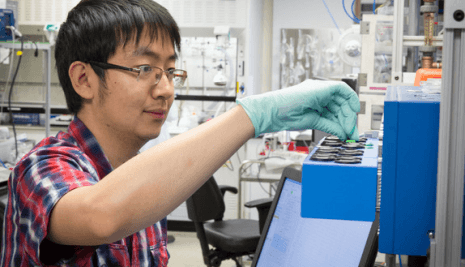Better lithium-ion Charging
on

We all know lithium-ion batteries need careful monitoring to prevent over-charging and ensure cell temperature remains within limits. We all thought we knew the best way to replace the charge as well: trickle charge, take it nice and gentle to keep the cell temperature down and prolong cell life. Turns out we may have got that last one wrong! New findings published in the Nature Materials Journal by a team of researchers at Stanford University indicate that by tweaking the battery design it may be possible to get faster charge/discharge rates and also increase the number of charge cycles.
To check out what was going on a microscopic scale the researchers made small coin cell batteries. These where then charged at different rates for various periods of time, dismantled (their contents washed out to stop the charge/discharge process) and then the electrodes were sliced up for examination under x-rays.
Lead author of then paper Yiyang Li explained "We were able to look at thousands of electrode nanoparticles at a time and get snapshots of them at different stages during charging and discharging". Expansion and contraction of the electrodes during the charge/recharge process is an important contributor to cell damage. They discovered that during the charge process, stresses were induced because only a small percentage of the nanoparticles absorbed and released ions, even at higher charge rates. At discharge, when the rate increased above a certain threshold, more particles absorbed ions simultaneously which produced less damage.
The results suggest that there is still some optimization available to Lithium ion cell technology, improvements to encourage a more uniform charge/discharge process may soon produce a new generation of batteries with much better performance.


Discussion (0 comments)